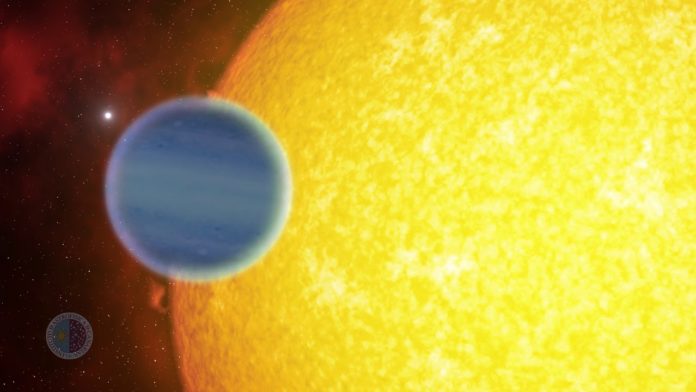By using the OSIRIS instrument of the Gran Telescopio Canarias (GTC), scientists at the University of Cambridge and the Instituto de Astrofísica de Canarias (IAC) have observed the exoplanet called WASP-127b. They found that the planet has strong signatures of metals in its atmosphere.
Scientists detected the presence of a large concentration of alkali metals such as Sodium, potassium, and lithium in its atmosphere. It means the planet has relatively clear atmospheres. Studying in detail, scientists found that the skies of WASP-127b are approximately 50% clear.
WASP-127b has a radius 1.4 times larger than Jupiter but has only 20% of its mass. It takes just over four days to orbit its parent star and its surface temperature is around 1400 K (1127° C).
Dr Guo Chen, a postdoctoral researcher at IAC and the study’s first author said, “The particular characteristics of this planet allowed us to perform a detailed study of its rich atmospheric composition. The presence of lithium is important to understand the evolutionary history of the planetary system and could shed light on the mechanisms of planet formation.”
Scientists also discovered possible signs of water. As scientists suggest, this detection is not statistically significant, as water features are weak in the visible range. The data detection is not statistically significant, as water features are weak in the visible range.
The planet’s host star, WASP-127, is also lithium rich, which could point to an AGB star – bright red giant thousands of times brighter than the sun – or a supernova having enriched the cloud of material from which this system originated.
Co-author Dr Nikku Madhusudhan, from Cambridge’s Institute of Astronomy said, “The results demonstrate the potential of ground-based telescopes for the study of planetary atmospheres. The detection of a trace element such as lithium in a planetary atmosphere is a major breakthrough and motivates new follow-up observations and detailed theoretical modeling to corroborate the findings.”
“We are just starting to probe the atmospheres of exoplanets with ground-based telescopes, but the authors believe that this will also be a reference exoplanet for future studies with space telescopes such as the James Webb Telescope, the successor to the Hubble Telescope. These future studies will reveal the detailed nature of WASP-127b as a benchmark for this new class of very low-density exoplanets.”
The results have been accepted for publication in the journal Astronomy & Astrophysics.
